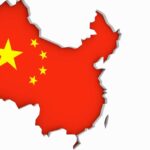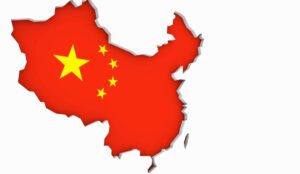
“The Data Needed to Answer” how bad is China’s economy “Is Vanishing.” The Chinese government has stopped issuing the statistics that would, supposedly, tell us, says the Wall Street Journal (May 5, 2025).
Not long ago, anyone could comb through a wide range of official data from China. Then it started to disappear.
Land sales measures, foreign investment data and unemployment indicators have gone dark in recent years. Data on cremations and a business confidence index have been cut off. Even official soy sauce production reports are gone.
In all, Chinese officials have stopped publishing hundreds of data points once used by researchers and investors, according to a Wall Street Journal analysis.
In most cases, Chinese authorities haven’t given any reason for ending or withholding data. But the missing numbers have come as the world’s second biggest economy has stumbled under the weight of excessive debt, a crumbling real-estate market and other troubles—spurring heavy-handed efforts by authorities to control the narrative.
If China were still publishing the statistics, how accurate would they be? Government statistics are dubious to begin with, no matter in which country the functionaries are collecting and collating them. As for China: “Many economists have long questioned the reliability of China’s headline gross domestic product data, and concerns have intensified recently. Official figures put GDP growth at 5% last year and 5.2% in 2023, but some have estimated that Beijing overstated its numbers by as much as 2 to 3 percentage points.”
“Estimated” means “guessed.” It’s not as if the estimators of discrepancy have been given two sets of books on the Chinese economy, the fake one and the real one.
Statistics and socialism
The leaders and lackeys of a regime like China’s, which is totalitarian, which is given to chronic censorship and lying, are unlikely to make a point of being scrupulously honest in reporting the data even when they do report it, especially when the data tend to show that the economy is in the crapper. In the People’s Republic of China, faking the numbers goes back to the days of Mao.
For independent investigators, a fair amount of reading between the lines is required when reviewing official statistics. They must check those stats against other records and accounts and what can be observed directly—when this is possible. Sometimes a fuller picture can be had only many years after the fact, when relevant archives are made at least somewhat available to researchers.
Some relevant facts emerge contemporaneously. If many workers throughout the country are out on the street protesting about unemployment, this says something even if one lacks unemployment statistics. The Journal reports that in the current circumstances, economists are looking at such alternative economic clues to what’s happening in China as “movie box office revenues, satellite data on the intensity of nighttime lights, the operating rates of cement factories and electricity generation by major power companies.”
Even when it publishes no statistics or only fictional statistics, any government that aspires to centrally plan the economy still needs more or less “honest” statistics for its own work. For “only by statistics,” economist Murray Rothbard once observed, can a government “make even a fitful attempt to plan, regulate, control, or reform various industries—or impose central planning and socialization on the entire economic system…. Surely, the absence of statistics would absolutely and immediately wreck any attempt at socialistic planning.”












